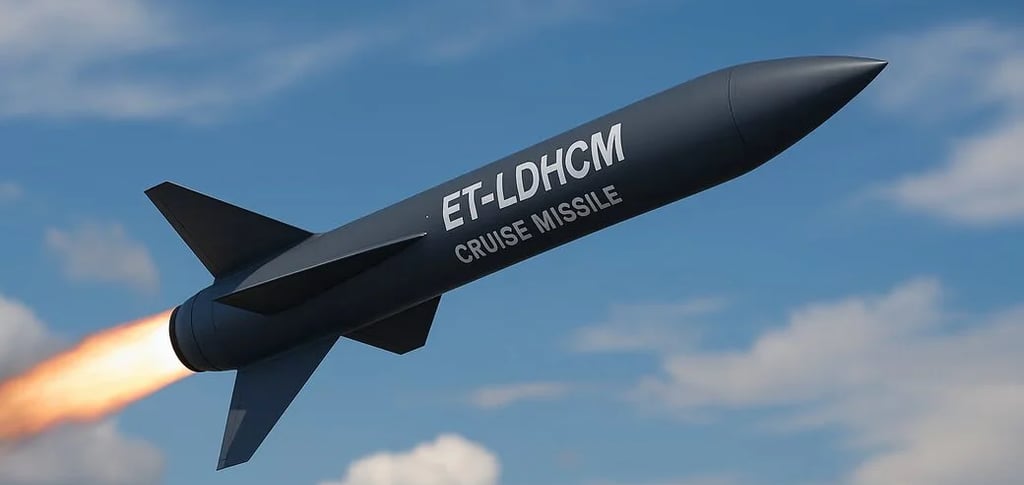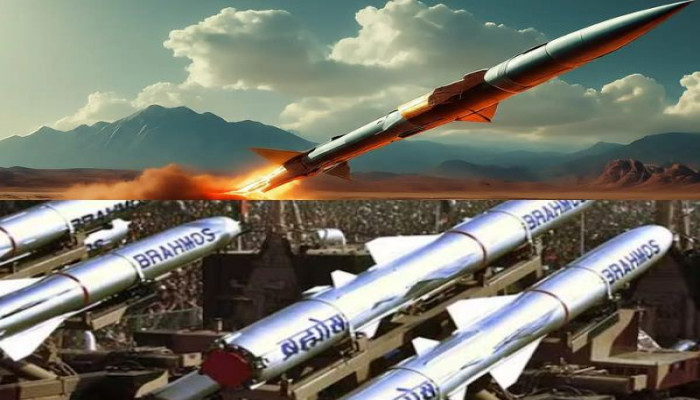India Tests New Hypersonic Missile ET-LDHCM That Flies at the Speed of Sound
July 15, 2025 – New Delhi India has successfully tested a cutting-edge missile called the Extended Trajectory Long Duration Hypersonic Cruise Missile (ET-LDHCM). This missile can fly at incredible speeds up to eight times the speed of sound and hit targets as far as 1,500 kilometers away. This marks a big step forward in India’s defense technology.
NATIONALTECHNOLOGY
Thinkbrief
7/15/20252 min read


India has successfully tested its most advanced indigenous hypersonic missile, the Extended Trajectory Long Duration Hypersonic Cruise Missile (ET-LDHCM), marking a significant milestone in the country's defense capabilities. Developed under the Defence Research and Development Organisation's (DRDO) Project Vishnu, this missile is designed to travel at speeds exceeding Mach 8, approximately 11,000 km/h, and can strike targets up to 1,500 kilometers away.
A Leap in Hypersonic Technology
The ET-LDHCM utilizes a scramjet engine, an air-breathing propulsion system that operates without a rotating compressor, drawing atmospheric oxygen to achieve sustained hypersonic speeds. This innovative design allows the missile to maintain high velocities over extended distances, making it challenging for adversaries to intercept.
In comparison, India's existing BrahMos cruise missile operates at Mach 3, reaching speeds of about 3,675 km/h. The ET-LDHCM's enhanced speed and range represent a significant advancement in India's missile technology.
Strategic Capabilities
The missile's design emphasizes stealth, precision, and flexibility. It is capable of carrying both conventional and nuclear warheads weighing between 1,000 to 2,000 kilograms, allowing for a versatile response to various threats. The missile's low-altitude flight profile aids in evading radar detection, while its mid-flight maneuverability ensures precision targeting, even in challenging terrains.
Additionally, the ET-LDHCM is engineered to withstand extreme conditions, with heat-resistant materials capable of enduring temperatures up to 2,000°C. Its oxidation-resistant coatings ensure operational reliability in diverse environments, including exposure to sunlight and seawater.
Versatile Launch Platforms
The missile's versatility extends to its launch capabilities. It can be deployed from various platforms, including land-based, airborne, and naval systems. This adaptability enhances India's strategic options, enabling the missile to be launched from Sukhoi Su-30MKI or Dassault Rafale aircraft, as well as from sea and ground platforms.
Strategic Implications
The successful test of the ET-LDHCM places India among a select group of nations with operational hypersonic capabilities. This advancement enhances India's deterrence posture and provides a credible response to emerging threats in the region. The missile's speed, range, and versatility make it a formidable asset in India's defense arsenal.
Looking Ahead
The development and successful testing of the ET-LDHCM underscore India's growing prowess in advanced defense technologies. As the country continues to enhance its strategic capabilities, the ET-LDHCM stands as a testament to India's commitment to self-reliance and innovation in defense technology.

